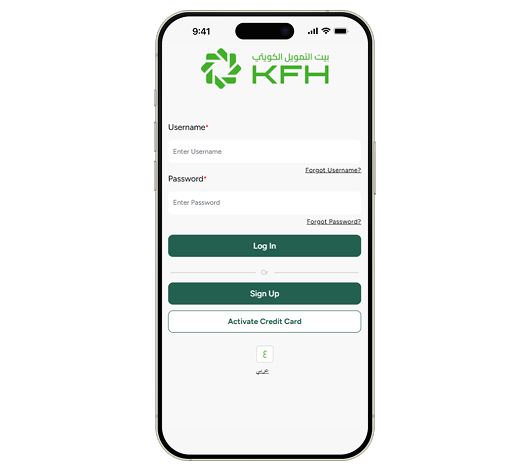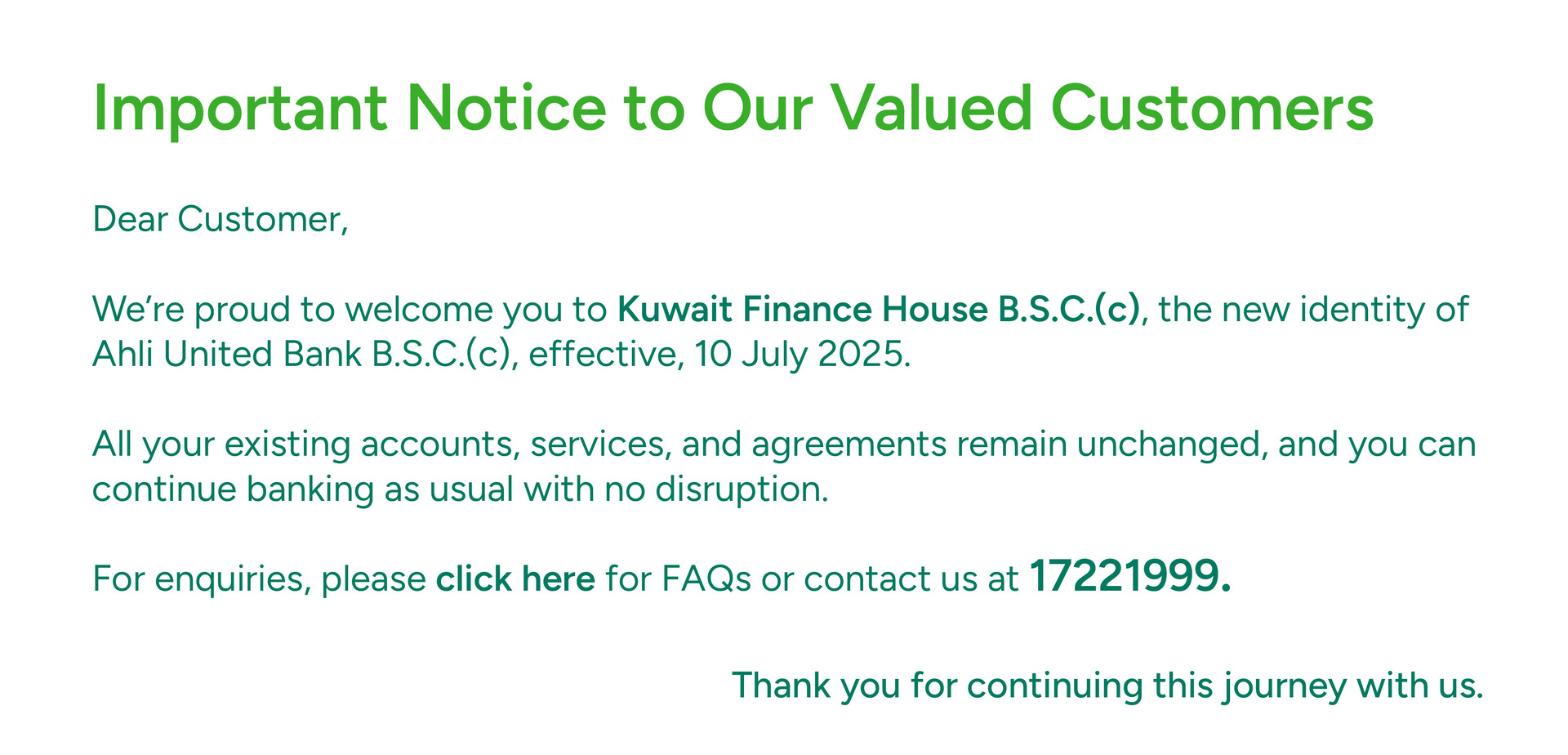MyHassad
Unlock the chance to win valuable cash prizes and step into the world of MyHassad.
Learn more
KFH Mobile Banking application for
smartphones with you
all the times...!
 Open new account
Open new account Transfer Money
Transfer Money
 Open fixed deposits
Open fixed deposits Request Credit Card
Request Credit Card













